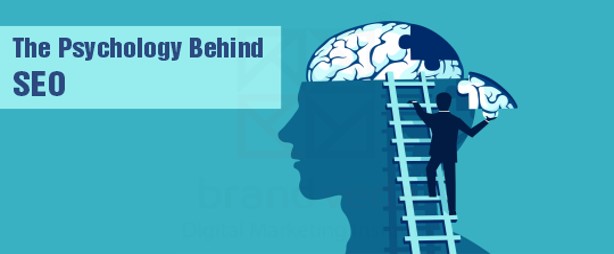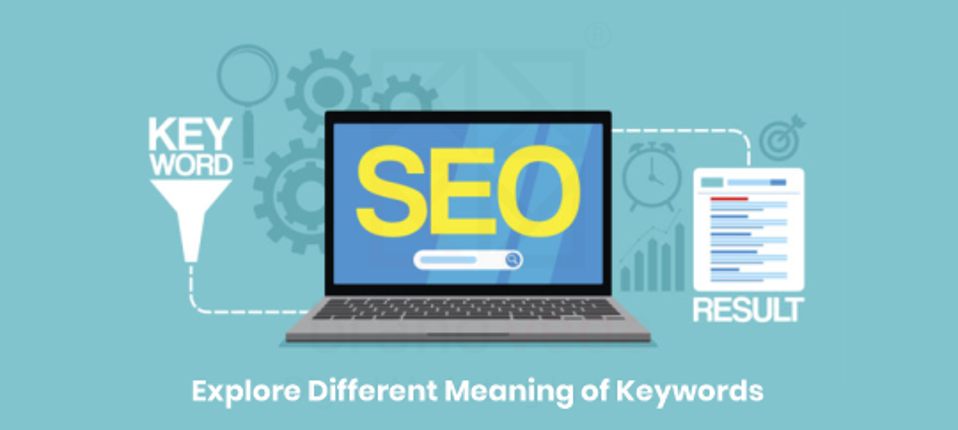It’s time to rise above the crowd and not only survive today’s challenges but thrive. As a true sales professional, you understand the importance of your website presentation and where all your website is being marketed.
Selling is Serving
Your website today is known as your portable office which delivers highly personalized services to people who have the need and ability to own your product or services. Selling is service. And your website helps you in excelling this service.
As an individual or as an organization, you may face incredible pressure to put your product or service, your monthly quota, your company, or even your own personal goals ahead of the needs of your client. That is what the companies used to do in the past which lead to the road to tragedy, not to achievement.
Today, clients are becoming more sophisticated in their knowledge of products and services, and in the new technologies and how things are behind functioned, either behind the scenes of product making or in the main essence of presenting your products or services to them.
The winners in the will be those individuals and organizations who take on these multifaceted challenges and turn them into opportunities to build strong and long lasting relationships with clients.
This is where the importance of your website and what goes on your ‘on page of it matters’. If it is all in sync with what you have spoken in boardroom meetings. Given below we have tried to incorporate the psychology of how websites work along with your consumer behavior.
The Psychology of How SEO Helps you in Ranking and Selling your Services
But psychology and marketing have always been linked-what is so different about it now?
Unfortunately, the psychology of your consumer behaviour is not quite as married as it should and could be to the SEO industry. In the early days of SEO it was fairly primitive to exploit page material for top spots during Google.
A keyword can have multiple meanings
Just like beauty is in the beholder’s eye, the meaning of a word is in the searcher’s eye. This is particularly true for keywords or queries, that is the combination of words used in a search box. Close your eyes (but keep reading though) and imagine: go to Google and enter in the search box the word ‘ website.’ You get to a result-filled list, and take a few moments to analyze the fragments that appear.
Unhappy with the answers, you may carry out a search again. But now you can become more specific and write’ create a website’ instead of using a different term. This is a classic case of RSS or’ Repeated Search Syndrome’ and is seen primarily when you perform a search that is meaninglessly too broad. Generally, you will get a mix of results (definitions, tutorials, videos, etc) if you search for a non-specific term. Why? For what? Because it’s too hard to discern whether it’s a query type of’ know,” go’ or’ do.’
Therefore the more specific keywords become, the clearer the intention of the searcher becomes. A better understanding of intent will enable you to create content that meets the user’s query in the best possible way. This is another great reason for using long keywords on the tail. We’re not talking about’ conscious medium,’ we’re talking about phrases that are at least four or five words long, such as’ how to create a website’ or’ creative web design examples.’ Once you’ve identified strong long tail keywords, you might even start your own blog. This will enable you to post a variety of content, help you target the right people and increase clicks on your website.
What’s SEO On-Page?
On-page SEO (also known as “on-site SEO”) is the practice of optimizing search engine and user content on webpages. Common on-page SEO practices include tags, content, internal links, and URLs optimization. This is different from off-page SEO, which optimizes for signals that occur off your website (such as backlinks).
Why is on-page SEO important?
First, web pages content is analyzed by algorithms to determine whether the page contains information that might be important to what you’re searching for.
The most simple indicator of importance to information is when a web page includes the same keywords as your search query. If those keywords appear on the page, or in headings or text bodies, the information is more likely to appear
Use your Companies Focus Keywords
This is an on-page back in those day’s SEO tactic which still makes a dent. All you need to do is use your keyword once in your article’s first 100–150 characters. For instance, I listed the keyword right off the bat in my article structured around the keyword “email marketing.”
WHY should you be focused on the SEO on-page?
Because it’s an integral part of SEO that can help you get higher rankings, get to a bigger audience and get more organic traffic. Like off-page SEO, on-page SEO is in full control of you.
WHEN to do SEO on page?
Many things are required as a one-time setup when starting with the website (e.g. page layout, HTTPS, website speed optimization), other tasks are required every once in a while–any time you publish a new blog post, you need to take account of on-page optimisation.
On-page SEO should be done even if you rank #1 in the search results as SEO is a continuous one
WHO should do SEO on page?
Any website user, blogger, expert in online marketing or SEO. Anyone who actually tries to rate a website in search engines.
WHAT are SEO considerations on the site?
Optimisation on-page is made up of many steps. Here’s a list of the 12 key on-page SEO factors that directly or indirectly influence your website’s success.
- Crawl website–the website is crawlable and indexed by search robots
- Site architecture–the architecture of the pages has a clear structure and logic Quality
- outbound links–the website links to high quality external resources
- Website speed–pages load quickly on all devices
- Mobile friendliness–page makes on each device and browser
- Using HTTPS –the website is protected and has an SSL certificate
- User-friendly URLs–URL addresses are easy and UX-friendly
- Well-targeted material–the page targets a specific search intention
- Keyword optimization–the page uses similar keywords in appropriate locations
- Photo optimization–photos are designed for Readability
- UX search engines–text is well-optimized, readable
- UX-friendly Click-through rate–title tag and meta description have been optimized for the website
Usability of the Website
Is the key issue which is quite complicated and many considerations are taken into account whe it comes to usability. To make your page more accessible you can speed up your website’s loading time, note hierarchically organized headings and break texts into short paragraphs.
Boost your Page Load Speed
The page speed is a ranking factor and the explanation for this is clear. In this rapid age, if there are other quick choices no one is willing to wait for details from a site.
What if you open a tab, and wait more than 3 seconds, let’s say? You’re possibly hitting the back button and hoping for another answer.
Therefore you should consider the given below tips for developing an ‘onpage strategy’
- Easy to use: Make it easy for customers to refine their search criteria such as product color and size, autocomplete search terms, and ability, for instance, to handle enormous spelling and suport result sorting based on price and their location.
- Check for multi-channels: The ability to extract content from your website, including user-generated content and related social media activity, will enhance your search results: wealth and help drive product and service sales through customer reviews and ratings.
- Document Search: you may want to enable searching in various formats, such as Microsoft word, PDFs, Apple iWorks, Xml and video, in addition to the actual data ad merchandise on your site.
- Multi-lingual: website operates globally, you should ensure that your on-site search is developed to support the cross-border online setting of the countries to which you want to sell.
- Geo Search: The ability to index and scan regional coordinates is especially useful for companies with a shop front and to help drive footfall.
- Scalability: Ensure the scalability of your on-page search engine as your selection of products.
Behind the Scenes of Website Maintenance
SEO stands for search engine optimization, and when users search for specific words and phrases, it is the process of improving a website in ways that help it rank in search results. Just incase if you don’t understand the technicality of an on-page SEO optimization a good SEO course would come in handy.
If you are like most people, you would be searching for your smartphone or would be turning on your laptop or your desktop or your iPad and typing these simple sentences into google search box. You will then end up searching all the possible questions you were struggling to find the answers for.
But the sites which you are seeing there on the first page of your search engine rank didn’t get there just accidentally. The trick here is called SEO. This is how Google’s algorithm understands your questions and it’s relevant content.
The above-mentioned results would appear in your search engine according to the relevancy for your keyword. So, SEO can help you improve the results of your search engine rankings. This has the potential to have a huge impact on the most important goals of your business, such as boosting your leads and sales.
Link structure
Another element of website optimization that should not be overlooked is the link structure and popularity. A search engine will search for how many high quality inbound links connect visitors to your site and will partially base your result ranking on this factor.
Also important in website optimization are internal links and navigation structure, since the search engines will rank the deeper pages of your site based on their accessibility through internal link structures.
What is The Next Level for onpage SEO?
Today’s business leaders need to leverage analytics to develop better plans. Business leaders boost their operations with planning and the right moves, and push data and search engine optimization (SEO) programs to the next level. In the last two years, the two systems have changed a great deal.
With the help of big data and SEO, relatively recent innovations have created new ways for enterprises to find, understand and engage their audiences. As new marketing channels such as social media gains traction, there is a wealth of data available to help marketers understand new and exciting ways for consumers.
Consequently, marketing professionals are now working closely with engineers and IT specialists who use big data technology to maximize online marketing efforts.
Wrapping Up
While these reports are certainly taking a big step towards the SEO realm, they are beneficial to see how your content performs when checking for visitors arriving on your site. Updates can be made to the content or design based on keeping tabs on that information with your web development agency, or new content can be generated to help fill a hole.
At the very least, it’s helpful to be aware of what people are looking for when they arrive on your website–it will give you an idea of what kind of information they expect to find. At most, depending on your expectations, you may learn that you need to add an SEO course, in order for you to excel at the latest developments that are taking place in the ‘behind the scenes’ how things are done from the back office of websites.





